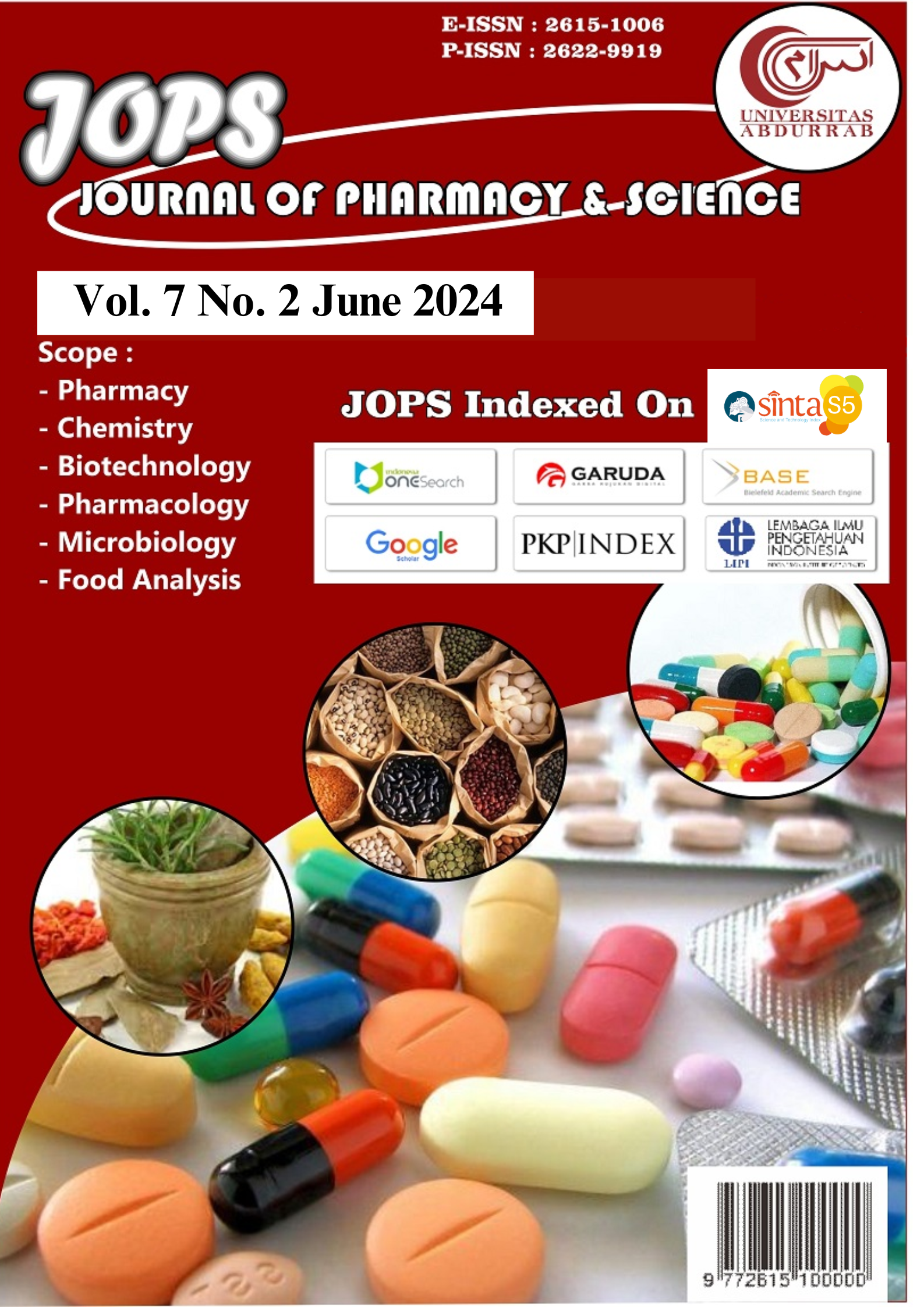A Impact of Potentially Hepatotoxic Drug Use On Clinical Outcomes In Patients With Liver Cirrhosis
DOI:
https://doi.org/10.36341/jops.v7i2.4719Keywords:
liver cirrhosis, potentially hepatotoxic drugs, prescribing, clinical outcomes.Abstract
Liver cirrhosis is a pathological liver disease characterized by the formation of fibrous tissue and regenerative nodules in liver cells. The potential for hepatotoxicity due to the use of hepatotoxic drugs leads to worsening of the liver disease suffered by these patients. This study aims to assess the impact of using potentially hepatotoxic drugs on patients' clinical outcomes. This study was an observational study with a cross-sectional design. Data were collected retrospectively through the medical records of patients with liver cirrhosis hospitalized in 2021. The clinical outcomes studied were SGOT, SGPT, albumin, total bilirubin and length of hospitalization. The results obtained were tested using the Kruskal-Wallis statistical test. A total of 62 patients with liver cirrhosis met the inclusion criteria as the study sample. The number of potentially hepatotoxic drug prescriptions received by patients based on Likelihood scores with categories A, B, C, D and E was 368 drugs out of 776 total drug prescriptions (47.4%). The most commonly prescribed potentially hepatotoxic drugs were paracetamol, ceftriaxon, and levofloxacin. It can be concluded that potentially hepatotoxic drugs are still prescribed to patients with liver cirrhosis. Age, gender, child pugh-score, number of drugs, and number of potentially hepatotoxic drugs had no significant effect (p>0.1) on SGOT, SGPT, albumin and total bilirubin. However, patients who received more drugs would have a higher.
Downloads
Downloads
Published
How to Cite
Issue
Section
License
1. Copyright of all journal manuscripts is held by the JOPS (Journal Of Pharmacy and Science)
2. Formal legal provisions to access digital articles of electronic journal are subject to the provision of the Creative Commons Attribution-ShareAlike license (CC BY-NC-SA), which means that JOPS (Journal Of Pharmacy and Science) is rightful to keep, transfer media/format, manage in the form of databases, maintain, and publish articles.
3. Published manuscripts both printed and electronic are open access for educational, research, and library purposes. Additiponally, the editorial board is not responsible for any violations of copyright law.
licensed under a Creative Commons Attribution-ShareAlike 4.0 International License.










